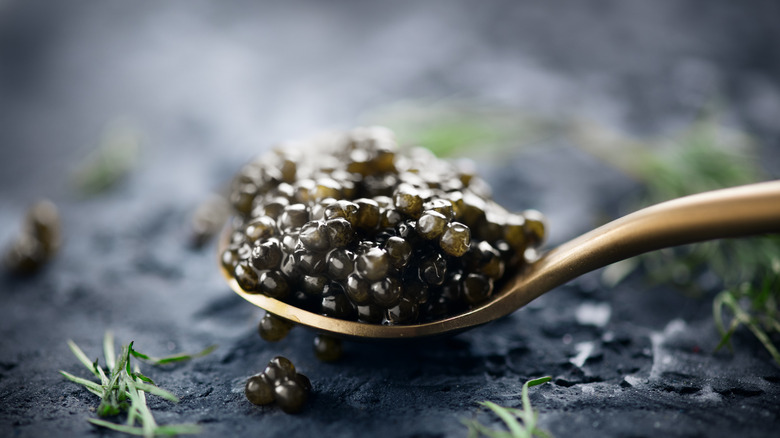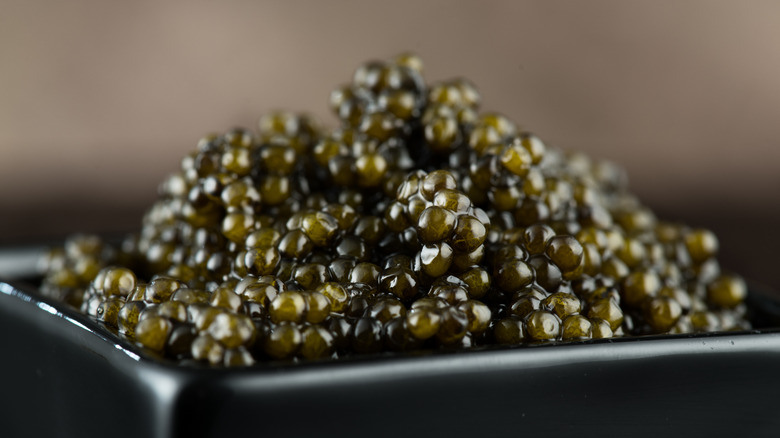Should You Chew Caviar?
We may receive a commission on purchases made from links.
Of all the luxurious things in life, caviar is often considered one of the finest that you can taste. The small pearly delicacy ranks quite high in the pecking order of the most expensive foods in the world. Not all caviars are created equal — as of 2020, the cheapest caviar cost around $1 an ounce and came from tobiko, lumpfish, and capelin, according to Caviar Star, while the most expensive variety came from the rare albino beluga sturgeon. On Amazon, Marky's Premium Almas Osetra Sturgeon Caviar currently carries a hefty price tag of over $480 per ounce.
Caviar is the easiest way to get someone to eat out of your hand. Okay, maybe it's a bit of a stretch, but the best way to eat your caviar is "off the back of your hand" because, as Calvisius Caviar vice president John Knierim explained to HuffPost, it achieves a "cleaner flavor" and could be cleaner than using your palm. Under no circumstances should you use a metal spoon to taste caviar because it can absorb the metallic taste. A spoon made from mother-of-pearl is considered ideal (per Caviar Star).
If you're lucky enough to get your hands on caviar (or the other way around), knowing how to eat it right is vital to get the best out of the experience. Getting that bottle of extra brut champagne or sevruga is not enough — the first question you should ask yourself when you lift that spoon to your mouth is "Should I chew my caviar?"
To chew or not to chew
Now that is the question. While caviar is popularly paired with blini, some like it with crackers, bread, and even unsalted chips (via Caviar Star). Traditionally, the best way to take it is by itself without anything else. Caviar should be savored like the luxury incarnate it is, and according to Christopher Klapp, the General Manager of the reputed Petrossian Restaurant & Boutique, chewing it is not the way to go.
"You should use your tongue, never use your teeth. You can really feel the bead of the caviar and the butteriness of the fat that way," he told Food & Wine. "Hold a spoonful underneath your nose, and take in the aromas. Then put the spoon on your tongue, and turn it upside down so all the beads make contact with your tongue." If you haven't tried it yet, caviar apparently tastes like salt, butter, and opulence. It also tastes like history and rarity.
Did you know caviar wasn't always the blue diamond of the food world? In fact, it was deemed peasant food for centuries. Ivan the Terrible fell in love with caviar in the 1500s, and that's reportedly how it got its royal affiliation. True caviar is highly expensive today because sturgeons are endangered and it could take as long as a couple of decades for a female to produce eggs (via Business Insider).

